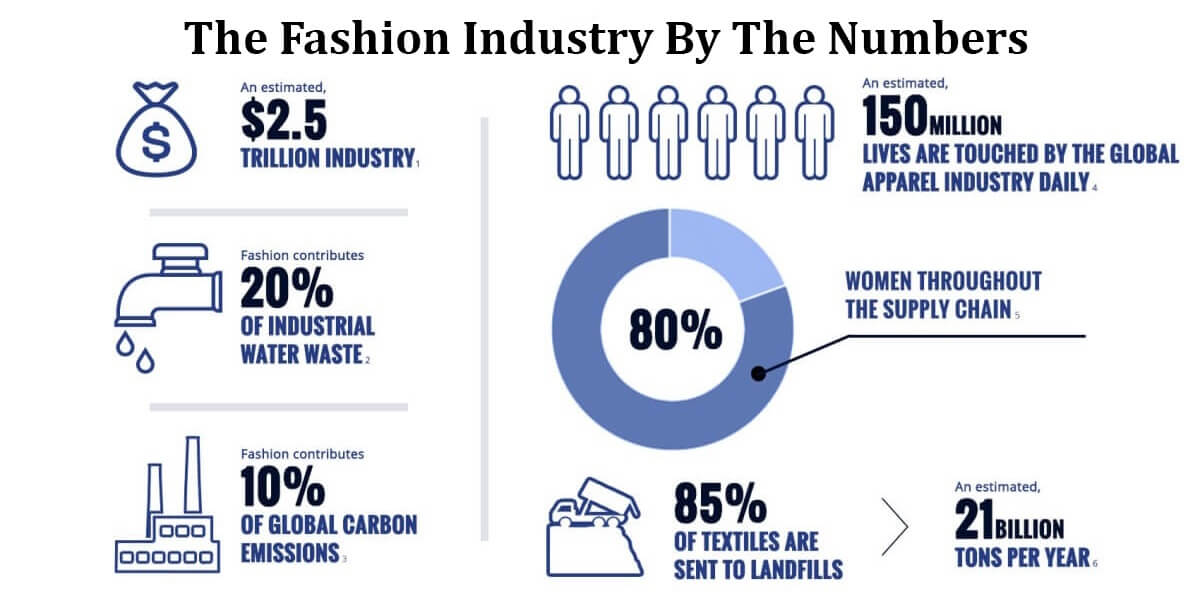Your Cart is Empty
Be the Change You Wish To See In The World!!!
How Planting Trees Can Help Save Our Planet
According to the World Wildlife Fund, forests cover 31% of the Earth’s land. Eighty percent of the land animals in the world live in forests, which means the majority of the world’s terrestrial biodiversity exists in forests.
What’s more, trees clean our air, filter our water, and contain the ingredients to 25% of the medicines used around the world. Forests also employ over 1.6 billion people worldwide. Recently, researchers have posted reports stating that forests have one more, critically important function. They play a vital role in mitigating climate change because they soak up the carbon dioxide that would otherwise be free in the atmosphere. Excess carbon dioxide gas emissions contribute to changing climate patterns.
Of course, forests everywhere are under threat of deforestation and forest degradation. Agriculture and livestock are the most substantial reasons our forests are disappearing, along with illegal logging. Each year, we lose 18.7 million acres of forests or over 10 billion trees. Tropical rainforests face a particular threat because they are home to much of the planet’s biodiversity. The Amazon has lost approximately 17% over the past 50 years due to conversion for cattle ranching.
Reforesting could be the best way to mitigate climate change and protect our planet. Trees also restore entire ecosystems. They provide food and purify and preserve water sources, which makes trees crucial to sustainable development.
To support this idea, the 2018 International Panel on Climate Change reported that the best way to halt climate change is to plant trees. While cutting our emissions is part of the solution, we must make up for all the trees lost to deforestation. Globally, we need to plant over 1 billion hectares (2.5 billion acres) of trees to keep Earth from warming beyond 1.5ºC.

A Simple Solution to a Complex Problem
If it seems like a simple solution to solving the problem of climate change, that’s because it is for the most part. While industry continues to create harmful emissions, planting trees may be one of the most effective and affordable ways to offset rising emissions.
We would need to plant billions of trees around the world to make a difference. Though, we could do that without encroaching on urban areas or land used for agriculture. Keep in mind that it’s also essential to respect local as well as Indigenous people when designating land for reforestation.
As the trees grow, they would absorb and store the carbon dioxide emissions that are driving up temperatures on Earth. A worldwide planting effort would remove up to two-thirds of all emissions generated by human activity.
Forest Restoration is the Best Choice
Current studies from different researchers all point to the same solution; forest restoration will be the most effective way to curb the emissions that are driving climate change. Trees are the planet’s best chance at reversing the current trend of rising greenhouse gas emissions that come from fossil fuel burning and deforestation. Enough trees could even bring emission levels to zero.
The timing is essential here because it would take 50-100 years for all the trees planted now to reach their full effect, which is removing 200bn tons of carbon from the air.
Planting trees is a solution that doesn’t require political lobbying or advanced technology to accomplish. The trees take care of carbon dioxide naturally and more effectively than any technological solution. Trees are available now, and many environmental groups have already started planting campaigns. For those who want to help, the cost of saplings is $1 or less, and many people can grow and donate the trees themselves.
The Affordability of Tree Planting
Environmental agencies, some working with local governments and some without, are restoring forests for about 30 cents a tree (in US currency). Reforesting at the amount needed to halt climate equates to nearly 1 trillion trees or $300 billion.
That number is a bit ambitious in that it would require an efficient execution. Even at the $300 billion mark, it’s still the cheapest solution over other proposals. While tree-planting could take place anywhere across the world, Australia, Canada, China, Russia, the US, and Brazil hold half the potential restoration sites.
Planting Trees Alongside Crops
Many of the projected acres for reforestation exclude agricultural land. However, some researchers believe that agroforestry, which is growing trees alongside certain crops, can be mutually beneficial. Such crops include coffee, berries, and cocoa.
The Bonn Challenge
One tree planting initiative that’s well underway is the Bonn Challenge, which is backed by 48 nations. The goal is to restore 350m hectares of forest by 2030. Unfortunately, many of the countries involved have only committed to restoring less than half the area that they could to support new forests. One of those countries is Brazil, home to the Amazon rainforest, which could make a huge impact if it maximized its available land.
Ethiopia’s Tree-Planting Campaign
In 2019, Ethiopia launched a tree-planting campaign as part of Prime Minister Abiy Ahmed’s Green Legacy Initiative, the goal of which is to revitalize Ethiopia’s environment while mitigating and adapting to climate change. The tree-planting initiative’s goal is to plant 4 billion trees in the coming years by encouraging citizens to plant 40 seedlings each.
In July of 2019, volunteers, aid workers, and government officials planted more than 353 million trees in Ethiopia in one day. The event was such a massive undertaking that it broke the world record for the number of trees planted by a single country in under 24 hours. India held the previous record, when, in 2016, citizens planted 50 million trees in a single day.
A Degraded Environment
Ethiopia’s government embraced this initiative because the country’s environment has been heavily degraded for decades. At the turn of the 20th century, trees occupied 35% of Ethiopia’s landmass. Since the year 2000, tree coverage has dropped to an alarming 4%. Besides blatant deforestation, the soil erosion throughout the country is pervasive and has contributed to the declining number of trees. Once fertile soil is turning to desert, which is threatening flora and fauna throughout large areas of the country.
Impacts of Climate Change on Ethiopia
On top of deforestation and soil erosion, climate change is affecting Ethiopia, and the government is taking appropriate notice. The country has suffered extreme droughts that have devastated farming communities, which has, in turn, caused country-wide food shortages.
The United Nations believes that trees can help in several ways. They can help the soil recover, mitigate the effects of the droughts, clean the air, purify water, protect the immediate environment from storms, and provide sources of food.
 Photo by NASA: Map of global tree loss/tree gain since the early 1980s
Photo by NASA: Map of global tree loss/tree gain since the early 1980s
The Negative Impacts of Industry
Planting trees through volunteering campaigns like the Bonne Challenge and government-sponsored initiatives like Ethiopia’s record-breaking tree planting are two ways of reforesting the planet. Another way is to prohibit industries such as livestock, agriculture, fossil fuel development, and mining from continuing to cut down forests.
Planting trees is the best way to reforest and, thus, combat climate change. However, the world would have to shift from the current, ongoing trends of deforestation by industry. It takes decades to replace a tree that only takes minutes to cut down.
As an example, Brazil, which is the primary home of the Amazon rainforest, has seen an increase in deforestation. As of 2019, it has risen by 80%. The resistance to conservation is so strong that Indigenous leaders who fought to protect the forests have been killed.
So, while the fight to conserve our forests has yet to be won, planting trees is one alternative that promises to restore some of these vital forest areas without meeting resistance from the agricultural and fossil fuel-related industries. It’s not a complete solution, but it is a sustainable one that we can all support.
Reforestation Bracelet
At Bead the Change, we believe in the importance of saving our forests and the species that live within them. One of our primary goals at Bead the Change has always been to protect and rehabilitate the environment. The world’s forests are crucial for a clean and healthy world. We know that supporting reforestation is one of the best ways to preserve the health of our planet.
One of our more popular bracelets for a cause is our Reforestation Bracelet. The proceeds from every sale support an organization called One Tree Planted (OTP). The bracelets are made using, transparent green glass beads. Like all of our recycled bracelets, the beads are made of recycled glass, and we use recycled plastic bottles to make the adjustable cord.
When you purchase one of our reforestation charity bracelets, One Tree Planted will provide and plant two tree saplings in a location where they are most needed.
One Tree Planted is a not-for-profit organization that enables people to plant trees around the world. OTP plants trees across the globe in North America, South America, Africa, and Asia. They also aid in reforestation in areas that are affected by floods and fires. In doing so, they build communities, create jobs, and protect habitats for biodiversity.
Comments will be approved before showing up.
In short, ethical fashion works toward the social good of society. It takes into account the workers who make the clothing industry possible. This includes everyone from the farmers who grow the fabric to the garment workers who stitch the pieces together. These efforts go beyond the surface we see as consumers. Rather, social good is deeper than the public image. A brand must take care to ensure fair wages, maintain fair trade certifications, and provide healthy working conditions. The ethically responsible brand invests in its people as much as it does its product, if not more so.
Now, you never have to tuck your jewelry away because it needs a deep cleaning. You can keep your jewelry sparkling yourself using eco-friendly cleaning agents you probably already have around the house.
Here are a few cleaning options that don’t involve harsh chemicals.



